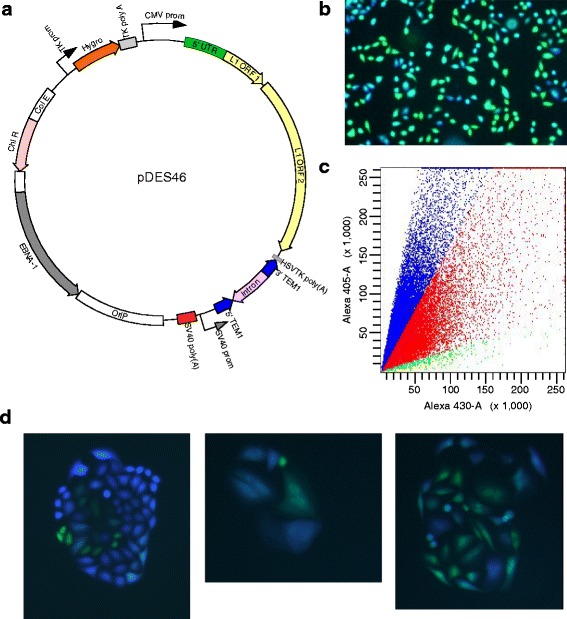Fig. 1.

A sensitive real-time reporter reveals variable and dynamic silencing of L1 integrants in cultured cells. a Schematic of a human L1 retrotransposon donor plasmid, pDES46. L1.3 was tagged at its 3′ end with a highly sensitive reporter gene, beta-lactamase (TEM1; blue open read frames) [19], interrupted by an artificial intron (AI; pink). This L1 donor construct, based on the pCEP4 episomal plasmid, was stably maintained on Hygromycin selection. Upon L1 mobilization, expression of real-time beta-lactamase reporter (encoded by the spliced, integrated TEM1 gene) was screened (without selection). b Fluorescence microscopy reveals wide-ranging levels of beta-lactamase (TEM1p) expression, ranging from zero or low (green cells) to high (blue) levels. HeLa cells were transfected with pDES46. Later the bulk population of cells was stained using a fluorescent substrate for the beta-lactamase reporter, CCF2-AM. c Scatter plot from flow cytometry, performed on a subclone of cells harboring L1 reporter integrants. Fluorescence emissions were detected for (y-axis, 405 nm emission) blue and (x-axis, 430 nm) green individual CCF2-AM-stained cells, as well all intermediate expression levels (red). d Variegation of L1 reporter expression in individual cell subclones. HeLa cells were transfected with pDES46, subcloned by limiting dilution so that all cells in a colony would contain the same de novo L1 reporter integrants, and stained with CCF2-AM and visualized by fluorescence microscopy
